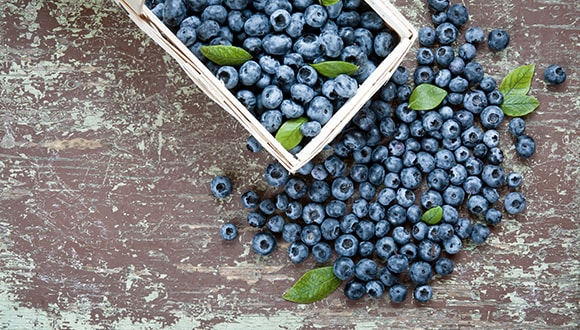Are superfoods really super?
The labels can promise everything from heart health to weight loss, but are these claims research-based or just clever marketing?
Health Agenda
April 2017
If you believe the hype, there are superfoods that can combat obesity, treat eczema and heart disease, and even cure cancer. But how do foods become super, and who decides which make the cut? Is this a label that should guide our shopping choices or be met with a healthy dose of scepticism?

The reality
One of the problems with 'superfoods' is that they're fiction. The açaí berries in your smoothie, the quinoa in your salad and the flaxseed on your cereal are real enough, but there’s nothing super about them, except marketing.
“The term superfood has no actual legal definition and isn’t a phrase used among nutrition scientists who are the leading experts in this field,” explains Lorinda Stutterd, an accredited practising dietitian with Health Management Dietitians in Cairns. “Anyone can claim a food is ‘super’, but it’s a term used as a marketing strategy rather than based on any set criteria.”
This isn’t to say that all foods are created equal. Just as some can be legitimately labelled 'junk', there are others with properties that go above and beyond when it comes to their nutritional benefits. Professionals in the fields of diet and nutrition call them ‘functional’ foods.
“We always use the term functional food,” says Professor Lindsay Brown, Professor of Biomedical Sciences at the University of Southern Queensland. “It may not sound as sexy but I think it’s more accurate. It’s this concept that a food can be both nutritional and prevent or reverse disease.”
Functional foods aren't always the exciting Amazonian imports you might assume. “Often these are foods that have been fortified with vitamins, minerals or fibre to enhance their nutritional composition,” says Stutterd.
"Many foods in their natural form could be considered functional in their own right. Wheat bran is one example, naturally high in soluble fibre that can relieve constipation and reduce the risk of bowel cancer,” she adds.
Real food, real results
Functional foods do seem to offer real results as part of a healthy lifestyle. Many are well known, such as oats, which benefit blood cholesterol, and plain yoghurt, which contains probiotics that support digestive health. Others come out of new scientific research.
One example is the Queen Garnet plum, bred accidentally by Queensland government scientists looking to solve bacterial spot disease. When researchers at the University of Southern Queensland investigated the unusually dark fruit, they found the plum had anthocyanin levels up to 10 times higher than other varieties.
The anthocyanin (cyanidin glucoside) is a type of flavonoid in dark-coloured fruits and vegetables that acts as a powerful antioxidant. It has some immune system benefits. “These compounds are amazingly anti-inflammatory,” says Professor Brown, adding that eating this fruit can treat diseases such as obesity caused by chronic inflammation.
In tests on rats, the plums produced very positive anti-inflammatory effects, resulting in loss of abdominal fat and improved heart and liver structure and function.
Small trials with mildly overweight and hypertensive people showed similarly impressive results. By drinking 250 millilitres of plum nectar each day, participants experienced a decrease in blood pressure in line with standard blood pressure medication.
The plums are available at selected greengrocers and supermarkets for about $18/kg when in season, approximately twice the price of normal plums, or as nectar out of season.
While these results appear promising, it’s important to remember that the science is still young and it remains to be seen whether people would be better off spending money on plums or an extra session at the gym. Even the best functional food can only work as part of a healthy lifestyle.
Foods worth trying
Professor Brown is also excited about other functional foods that aren’t common pantry items. “I would start looking at the seaweeds," he says. "The level of obesity, cardiovascular disease and diabetes in the East Asian population is much lower than here. Seaweed can be put into different dishes with relatively little [effort].”
Dried seaweed is available in a range of products including dulse flakes that can be added to everything from stir fries and salads to dips and smoothies.
Stutterd's choice of functional food is more prosaic. “Water. I know it’s not exactly a food but it’s the only essential nutrient we would simply not survive without. Water plays multiple roles vital to sustain life. There is no set amount we all need each day, it's dependent on body size, activity levels, climate, and other foods consumed in the diet.”
And it's not just adding enough water to your diet to stay well hydrated: drinking water after eating helps to lower cavity-causing acid levels in your mouth.
Both Stutterd and Brown emphasise that many foods have a place in a well-balanced diet, however Stutterd suggests the following are of particular benefit and can be found in most food stores:
- Oily fish have a high content of omega-3 fatty acids, an essential fat thought to help with heart health and mental acuity, and with lowering inflammation.
- Blueberries are a rich source of anthocyanins. They may also help with memory.
Broccoli contains high amounts of vitamin C, and is a good source of folate, beta-carotene, and fibre. - Garlic has antibacterial benefits and a substantial dose of antioxidant glutathione. Raw garlic also works to lower blood pressure, but cooking destroys the active ingredient that has this effect.
- Green tea contains polyphenols that are said to improve cardiovascular health and mental function. Its anti-cancerous properties are being studied further.
The next time you’re doing a grocery run, remember a healthy diet is simply eating nutritious, balanced meals. Choose a wide range of foods you enjoy (mostly minimally processed wholefoods) and you’ll also enjoy the nutritional benefits.